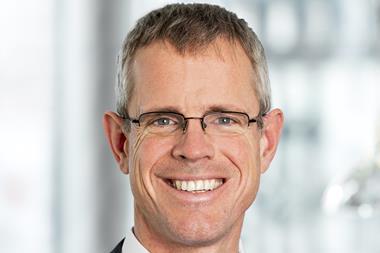Swiss pension schemes have recorded an increase in assets under management (AUM) for the past financial year on the back of positive returns of equity markets.
PK SBB – the pension fund for the Swiss federal railways – had an AUM of CHF19.48bn (€19bn) at the end of December last year, up from CHF18.93bn for the end of the previous year, according to the pension fund’s latest financial statement.
It returned 4.2% on the assets last year compared with 3.9% in 2020, 0.2 percentage points above its benchmark, driven by positive capital market developments throughout the year, and with the Swiss Market Index (SMI) reaching a new all-time high, it said.
The net income from its asset allocation stood at CHF783m in 2021, up from CHF707m in 2020.
Its funding ratio improved from 108.5% in 2020 to 112.4% in 2021, the fund said. The number of the active members increased year-on-year to 30,239.
Not only equities, but also equity-like REITs (real estate investment trusts) and private equity, which posted record profits last year, benefited from the overall extremely positive developments on stock exchanges outside of China, PK SBB added in the financial statement explaining the results.
Overall the pension fund’s equities (2.87%), real estate (1.08%) and alternative investments (0.99%) recorded positive returns in the past financial year, while fixed income investments had negative returns of -0.59% and cash -0-01%.
At the end of last year PK SBB invested 42.8% of its assets in Swiss fixed income, 19.8% in foreign currency bonds, 4.9% in Swiss equities, 11% in foreign equities, 12% in real estate, 5.7% in alternatives – including infrastructure, private equity and insurance-linked investments – and 3.8% in cash.
It has reduced its exposure to foreign equities by 1% in favour of private equity which has increased to 4% in portfolio.
Furthermore, PK SBB aims to reduce its CO2 footprint by 30% compared to its benchmark by the end of 2022, expanding its sustainability policy to direct investments in real estate in Switzerland and mortgages.
Meanwhile, total assets for the pension fund for the canton of Vaud, CPEV, rose to CHF15.5bn in 2021 from CHF14.3bn in 2020. Its investment strategy returned 8.6% net last year, up from 5% in the prior year, with equities and private placements mainly contributing to the positive returns, while bonds delivering a negative performance.
At the end of last year CPEV allocated 3.3% of its assets to cash, 5.8% to bonds denominated in Swiss francs, 5.1% to government bonds, 2.7% to corporate bonds, 1.5% to high yield bonds, 4.2% to emerging market (EM) bonds, 13.6% to Swiss equities, 13.5% to developed market equities, 4.5% to EM equities, 5% to real estate securities, 22.6% to Swiss direct and indirect real estate, 0.1% to alternatives, 6.1% to private placements, 4.3% to convertible bonds, 3% to foreign indirect real estate, 1.9% to raw materials, 2.6% to infrastructure and 0.4% to currency hedging.
CPEV aims to achieve a funding ratio of 80% in 2052, from its current 75.8%, and it has postponed the implementation of a new pension plan to 1 January 2025 from 1 January 2023.
Under the new pension plan the retirement age will increase by two years while maintaining a maximum level of pensions in defined benefit schemes of 60% of the annual wages for future retirees.
The latest digital edition of IPE’s magazine in now available





























No comments yet